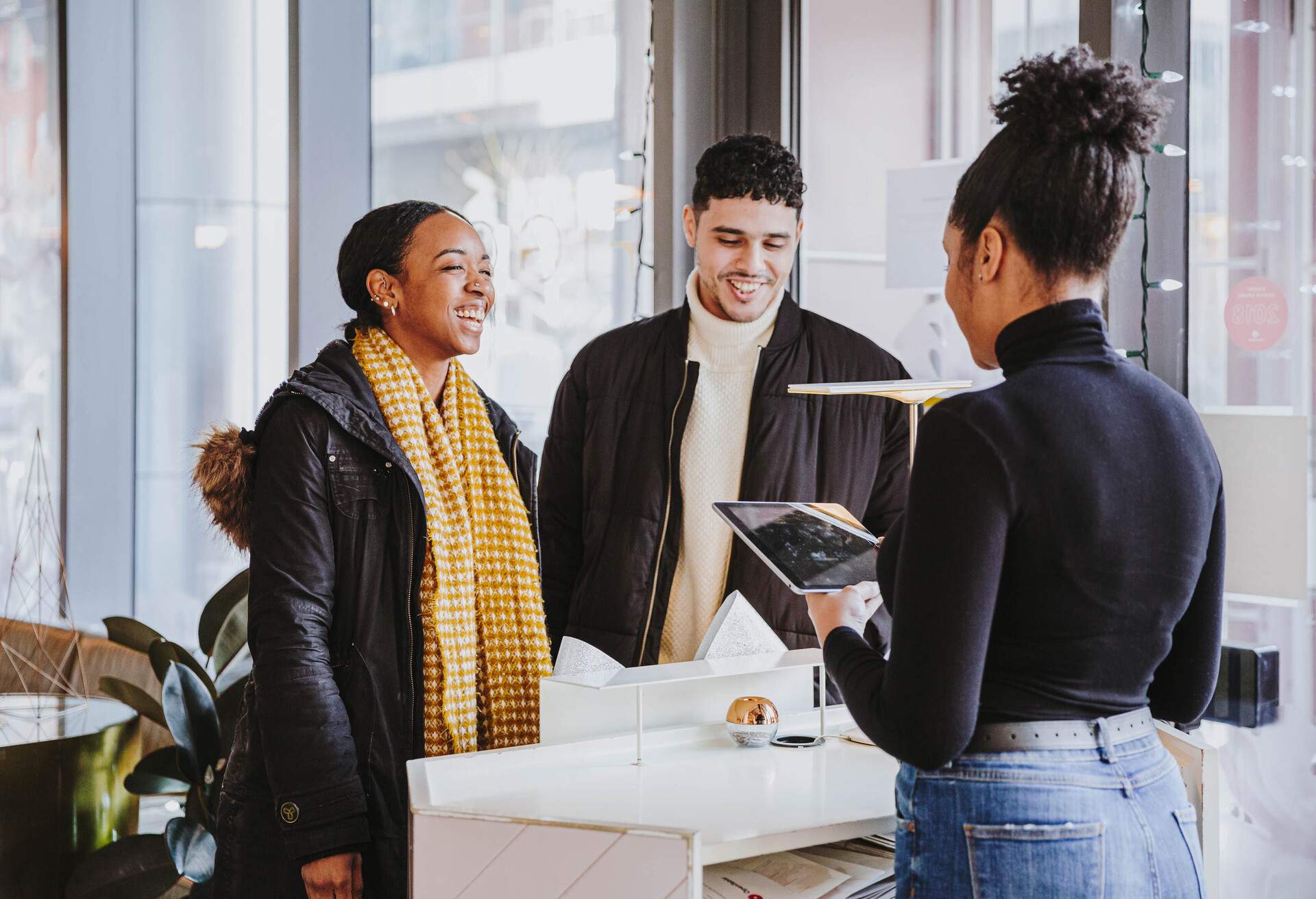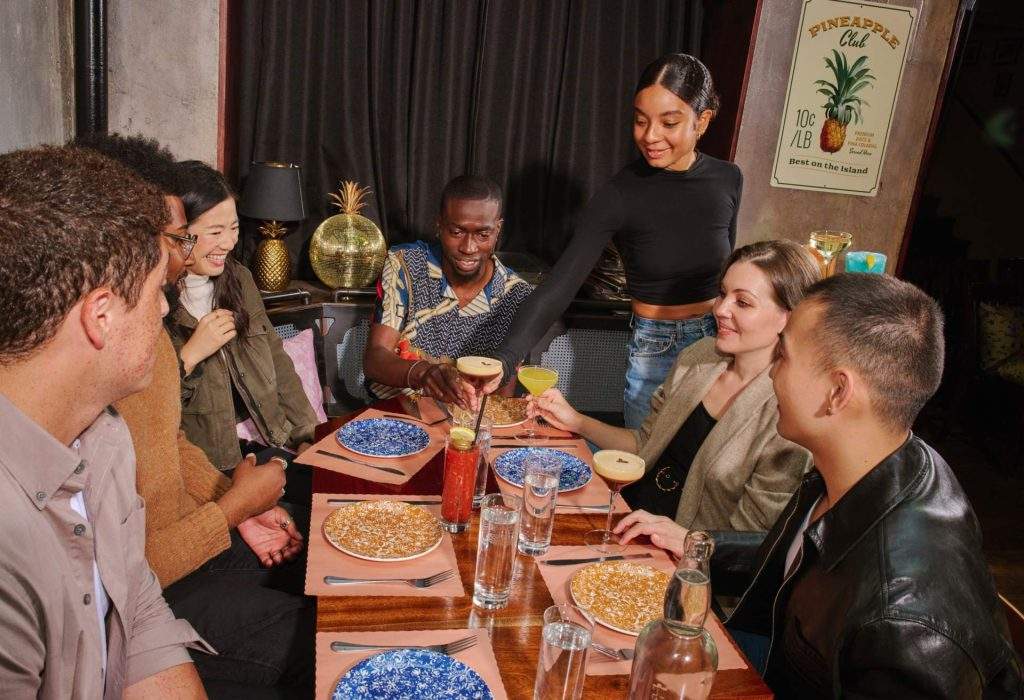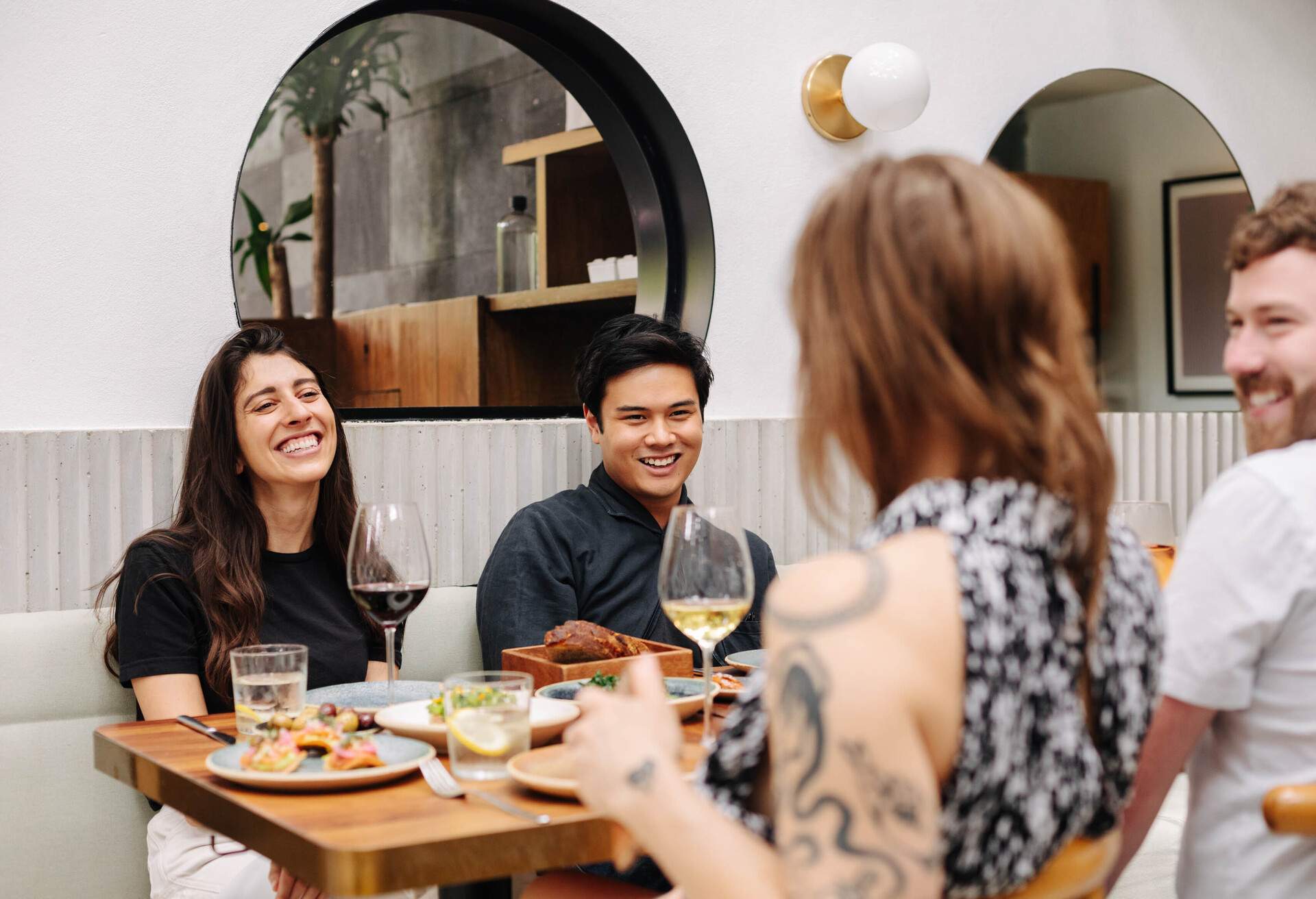We all know that hospitality is the key to success in the restaurant industry — not just getting bums in seats, but building real relationships with your guests and making them feel taken care of. In practice, though, hospitality requires an incredible amount of work: meticulous documentation, next-level interpersonal skills, and constant communication.
To see what that looks like in real life, we talked to three restaurant pros who have mastered it. Paul Walsh is Guest Relations Manager at Gramercy Tavern in New York City, where he estimates as many as 160,000 guests dine in a given year. And the Gramercy Tavern team keeps track of all of them. It’s not uncommon for a guest visiting from Virginia to remember a conversation he had with them two years ago and ask about him when they’re back in the restaurant. “”We’re keeping track of this stuff for a reason: we want to make these people be recognised,”” says Paul.
At the former restaurant Betony, also in New York City, General Manager Eamon Rockey catered to guests from all over the world in a special-occasion, fine-dining setting. Their approach tailored experiences to individuals. “I think of our approach to hospitality as being one that is highly studied and dependent on great amounts of information,” he says. “It’s practiced constantly and ultimately intended to be as personal as absolutely possible.”
Finally, Tai Ricci is a partner at Hi Neighbor restaurant group, which operates Stones Throw, Trestle, and Corridor in San Francisco. Their concepts are approachable, neighbourhood restaurants, but that doesn’t mean they are any less thoughtful about hospitality. “I have a list in the five years that I’ve been here of 650 regulars — my list of people that I had such a connection with when they walked in the door,”” says Tai. “Everyone wants to feel special, and it doesn’t take much at all. You just have to actually care.”
Here, find insider tips from Tai, Eamon, and Paul for creating incredible guest experiences, plus everything it takes behind the scenes.
Always try to find the “yes.”
At Gramercy Tavern, the team has two mantras: Always try and find the “yes,” and be on the guest’s side. “We’re a really popular place, obviously, and we can’t always get everybody in,” says Paul. “You want to try to find the yes and acknowledge that we would love to have them.” They use their waitlist and no-booking tavern area to seat as many guests as possible, and they will also recommend other restaurants, depending on the experience the guest is looking for. It’s all about being empathetic to their desires and circumstance.
“People always say to us, what’s your secret at Gramercy Tavern?” says Paul. “Our secret is that there’s no secret. It’s just treat people like they want to be treated, whether it be with the guests, or more importantly, with the staff.”
Pay attention to your greeting.
All of the experts agreed that how you greet a guest in the restaurant is incredibly important for setting a tone for their experience.
“It starts literally at the door,” says Tai. “I make direct eye contact with people, and the very first thing that I say to them is ‘Hello, how are you?’ It’s the most jarring experience they have at the restaurant. Most people will walk in and say, ‘Hi, booking under Ricci?’ And I’m like, ‘Hi, how are you?’ I don’t think that happens anywhere else.””
Paul jokes that some guests coming into Gramercy Tavern are terrified. “Are you going to have some Amazonian model standing at the door looking you up and down: ‘How may I help you?” he laughs. “We never say, ‘Do you have a booking?’ We say, ‘Are you joining us for dinner tonight?’ It just sounds better and adds to people’s experience.”
Plus, he adds, the person greeting guests at the door should never have their face down in a screen. Instead, says Paul, look up, genuinely welcome them, and get them to their table. “If they are known to us as a first-time guest we’re going to send a manager over and say hello. There’s different levels of repeat guests after that and what we do for them, rather it be a special amuse, starting them with Prosecco if they’re coming back for their anniversary again, and just a lot of touching the table from the managers, the captains. We focus on the casual elegance of our service here so it’s relaxed, yet really professional.”
At Betony, Eamon and his team used their pre-shift lineup before service to do a “greet,” the first 10 minutes of a guest’s meal. In that exchange, they tried to find out both functional and emotions knowledge so they are able to customise the dining experience to that guest specifically. “It’s the most crucial part of the meal. It’s a ton of fun, and it’s actually very difficult to do,” says Eamon.
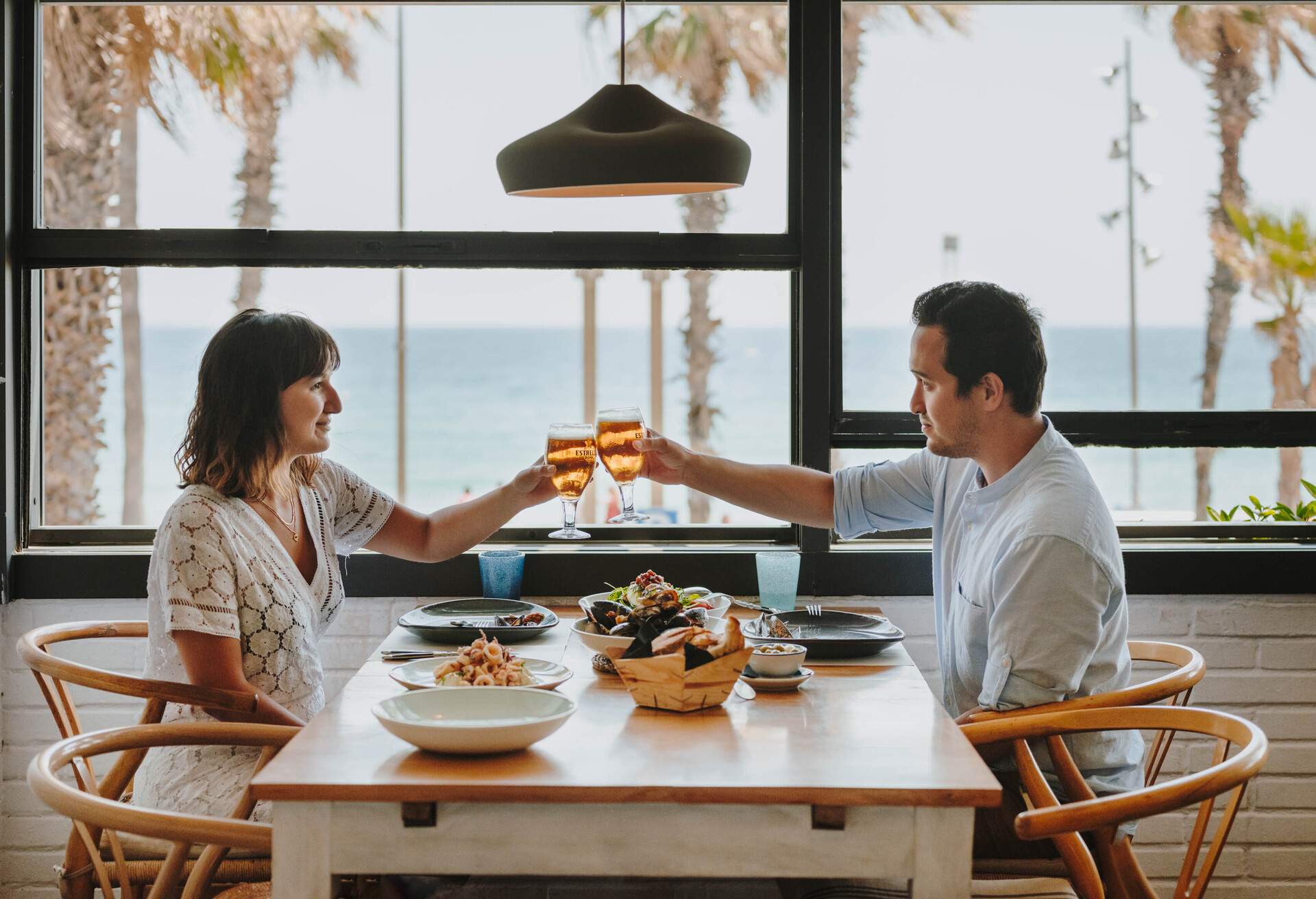
Capture as much information as possible.
So what kind of details are they looking for? “We find out special occasions, what they’re doing in New York, what their plans are for the rest of the night,” says Eamon. “All of this plays into the way we’re going to approach dinner with them.” From there, they would send over special menu items or drinks to make their experience more exciting. And they collect all special occasions, likes, and dislikes in OpenTable’s Guest Notes. “They are the principal tool that we use to category and catalog that body of knowledge and information.”
At Gramercy Tavern, Paul’s team Googles guests to learn about them before they walk in, and like at Betony, they also ask the right questions at the table. “We are huge on collecting information on the guests. We do build on every little thing that they do.”
“You get clues from tables, which we train the staff about,” Tai adds. “If it’s two ladies, you know they’re going to be hanging out for a while, they’re thirsty. They want their wine right now and then they don’t want to see you again.If it’s a business dinner they want to get right down to business. We keep notes on everyone, too, for people that have allergies or like specific wines — we can have something to start talking about with people right away.”
Tailor each experience to the individual guest.
At fine-dining, destination restaurants, the stakes are high. Maybe a diner has been planning a trip to New York for the past six months, and this may be their only visit to the restaurant ever. Every moment of their experience is precious.
“It’s not just about giving somebody something that’s great, it’s giving somebody something that’s great and is curated for them,” says Eamon. “If you provide somebody an experience that’s very natural and casual and that is their style of dining, then that’s amazing. You provide the exact same experience to someone who is feeling enormous amounts of pressure to have it be the greatest dining experience of their trip, then the approach to their dining experience has to be entirely different. There’s almost this high-stakes game of minute-to-minute conversation and dish by dish, drink by drink, bottle by bottle analysis that’s really high stakes and very emotional.”
If you know a guest is travelling from Cleveland, pair them with a captain on your team that’s also from Cleveland, says Eamon. “That’s not possible unless you’re being really observant and careful about the information-gathering component of making a booking.”
Another example: one couple became repeat guests at Betony, and the man decided to propose at the restaurant. He asked the team to print out a wine list that he could insert photos of him and his soon-to-be wife. Instead of stopping there, Eamon’s team took it to the next level by giving him one of their leather-bound wine lists, recording video from the security cameras, and serving them a “”Mariage Parfait”” beer because he knew they liked sour beers. The couple was so touched that they invited him to their wedding.
Capture information about dietary restrictions, preferences, and special occasions…
Eamon, Paul, and Tai all agreed that these categories reign supreme for creating special experiences. “Dietary restrictions and preferences in general also so we can steer them away from the things they could eat but don’t want to or steer them towards the things they love to eat,” says Eamon.
He’s also pre-emptive about special occasions. For example, if somebody makes a booking for an anniversary in March of 2015 and then February rolls around in 2016, they would email them, thanking them for celebrating at Betony last year and expressing that they would love to have them back again. “They’re always incredibly impressed,”” Eamon says. “We’re armed with a great body of information and record keeping as a result of using Guest Codes and Guest Notes. It enables us to really create these legends.”
With drink preferences, you can literally have cocktails ready for regulars as soon as they sit down, and be ready to recommend a wine you know a guest will love. Another beverage tip from Tai: know water preference. “It sounds like a small thing, but it’s one step out of the system: the server automatically brings you sparkling water. That’s a tiny little touch.”
Finally, remember their names, and call them by their names when they leave. “That makes people feel very important,” says Tai.
![]() …And details about the visit.
…And details about the visit.
If you sent over a special amuse bouche, if the guest spent big on wine, all of that should go in your notes. If they went to the CIA and used to work in the industry, add that, too.
“We’ll put in any issues that transpired, says Paul. “Maybe they didn’t like their table because it was cold, or they thought the food was overly salted.”
Here’s how Tai remembers visits: “When I’m at the door at Stones Throw, I see Tai Ricci’s coming in. Last time she waited 15 minutes and was sent a pâté, and she was really full. As soon as she walks in the door, I’ll say, ‘Welcome back! Didn’t you guys wait last time? Let me get you some Champagne and I’m going to get you seated right away.’ And you make sure that that never happens again. Then I go back and write notes: on 25th July was Champagne greeted, did not wait, sat at this table and was sent this.”
Communicating with guests strongly is also a key way to avoid negative reviews. Tai says she knows right away if someone doesn’t like what they ordered, because they will stop eating. She tells people after they order: “If you encounter anything about this experience that you want to comment on or just don’t like, you need to tell me because it’s the only way that I’m going to get better.”
Most people say everything was great at first, but then they will admit something was under seasoned or not cooked to their liking. Tai takes notes, and the next time they come in and don’t order that dish, she will send it to them, corrected. “They’re going to love it and be really appreciative.”
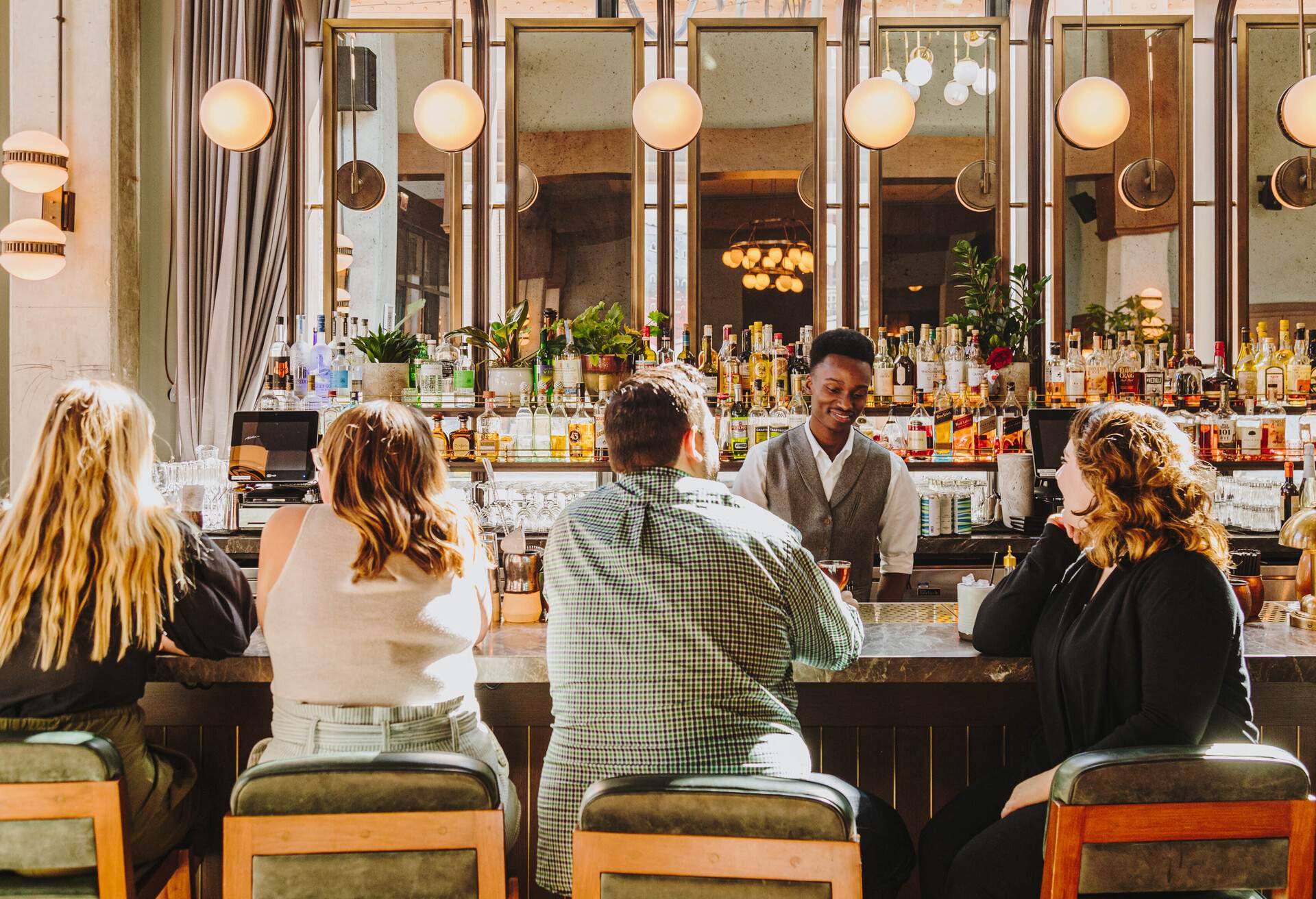
Show regulars extra love.
Eamon had one Betony regular who ordered the same gin martini every visit, prepared in a very specific way. “Whenever he makes a booking we always have the cocktail made about 15-20 minutes before — he’s always very prompt — and as soon as we spot him through the windows of the restaurant we add ice, stir it, and by the time he sits down it’s waiting for him.” That kind of treatment makes people want to come back again and again.
Since Stones Throw and Trestle are neighbourhood spots, Tai offers her regulars a neighbourhood discount or a glass of wine. She keeps track of these little extras so that if this time they sent over a pasta, next time they will send a dessert. “My whole goal is to do whatever I can that costs me nothing to get everyone coming back.”
Share information among key members of your service team.
Who needs access to information about guests, and how can you share it in a streamlined way? For Eamon, it was Betony’s booking agents, maitre d’s, and hosts, plus all of the managers. Captains filled out logs at the end of every night and wrote in notes about the guests, and the bookings team would input the notes to OpenTable. When the guest came back, the captain got a chit, or a data print-out of the person’s Guest Notes and Codes. “It’s a really cool system that enables us to prepare for someone that we’ve only seen once or twice or haven’t seen for a very long time,” says Eamon.
Paul follows a similar system at Gramercy Tavern, and his team also does a bookings report in their pre-service meetings. The maitre d’ stands up at family meal and runs through the list of everyone coming in for the night. Finally, they keep a list at the podium for managers to come look at and see all of the anniversaries (it’s a long list). Since he’s worked at the restaurant for 12 years, it’s not uncommon for people to recognise him, but him not quite be able to place them. “What’s nice about knowing who’s coming in is that it’s going to click in my brain,” he says. “It just refreshes our memory.”
Tai’s team also prints VIP chits, one of which goes to the server and another that goes to the kitchen. A chit at Stones Throw might say: Tai Ricci, neighbour, send snack not pâté. Then, the servers know she wants them to send a snack or choose a dessert and type on the ticket that it’s from Tai. Plus, she says, “they know where to look in OpenTable for what people are fed.”
And every morning, she starts her day the same way. “I’ll wake up, pour a cup of coffee, open my laptop, and I’ll check the books.” She text messages the General Manager and leaves notes in the bookings so not a single regular guest goes unnoticed.

